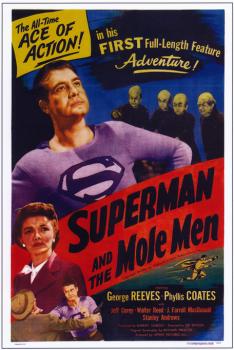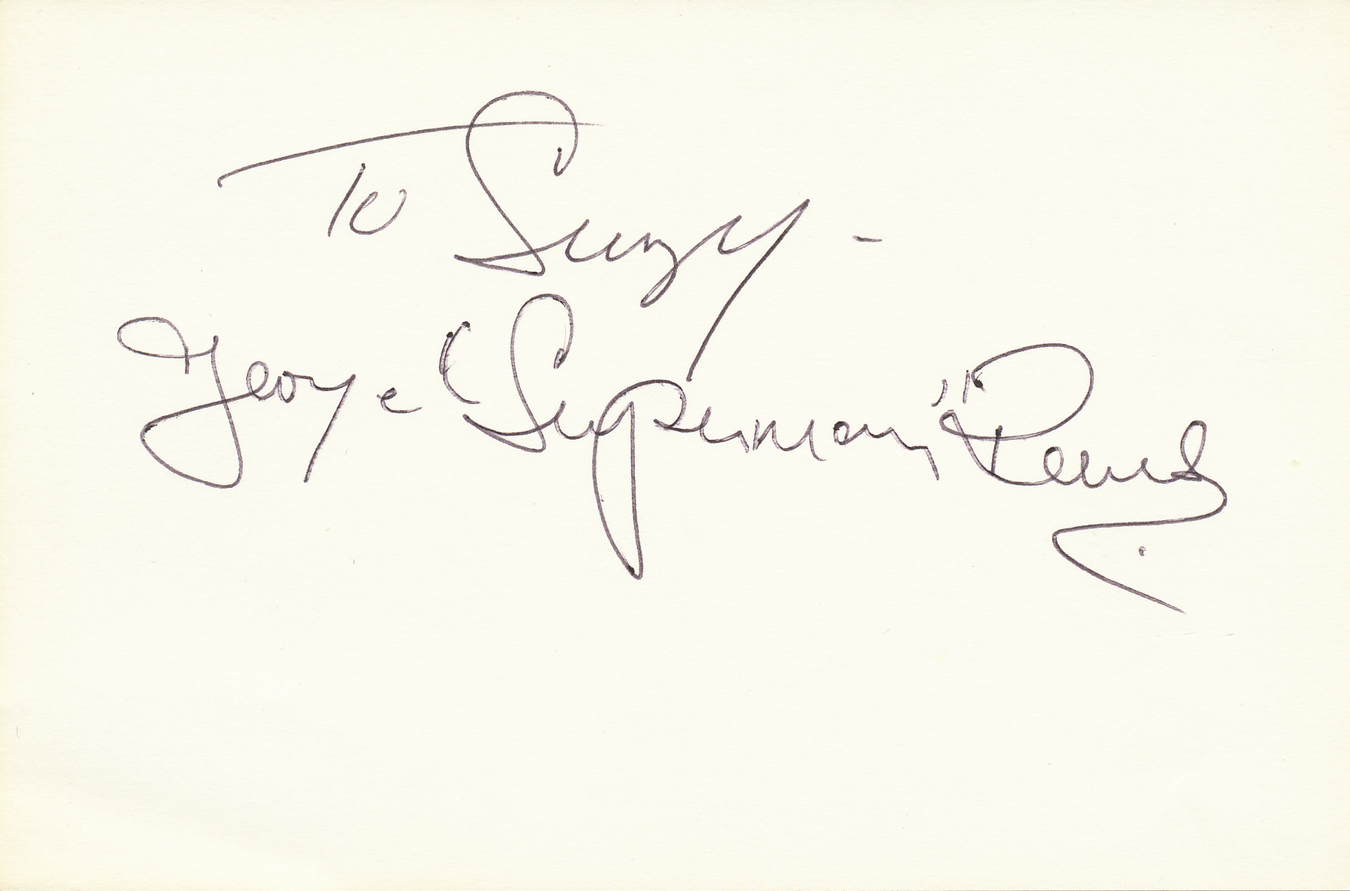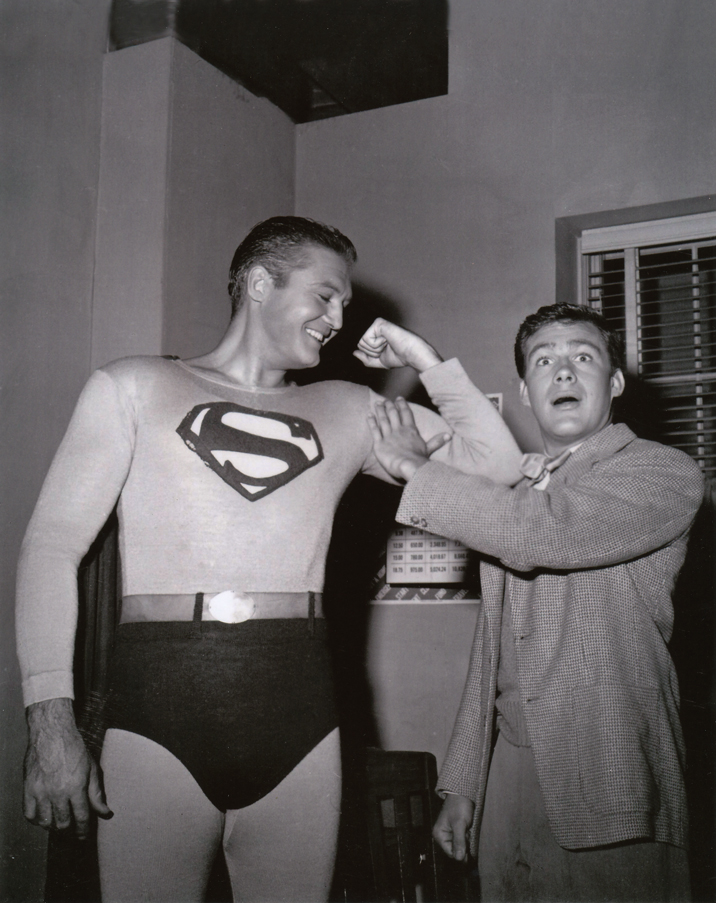George Reeves
George Reeves
Autographed Card George “Superman” Reeves - c1950s
Scarce and boldly signed card “To Suzy — George ‘Superman’ Reeves”. In black ballpoint on 4″ x 6″ ivory card, and in perfect condition. Accompanied by black-and-white photo of Jimmy Olsen (actor Jack Larson) impressed by The Man of Steel.
George Reeves (1914-1959) was an American actor best known for his role as Superman in the 1950s television program Adventures of Superman.
Reeves’s film career began in 1939 when he was cast as Stuart Tarleton, one of Vivien Leigh’s suitors in Gone with the Wind. It was a minor role, but he and Fred Crane, both in brightly dyed red hair as “the Tarleton Twins,” were in the film’s opening scenes. He was contracted to Warner Brothers at the time, and the actor’s professional name became “George Reeves” and his GWTW screen credit reflects the change.
In June 1951, Reeves was offered the role of Superman in a new television series. He was initially reluctant to take the role because, like many actors of his time, he considered television unimportant and believed few would see his work. He received low pay and only for the weeks of production. The half-hour films were shot on tight schedules; at least two shows were made every six days.

Reeves’s career as Superman had begun with Superman and the Mole Men, a film intended both as a B-picture and as the pilot for the TV series. Immediately after completing it, Reeves and the crew began production of the first season’s episodes, all shot over 13 weeks in the summer of 1951. The series went on the air the following year, and Reeves was amazed at becoming a national celebrity. In 1957, the struggling ABC Network purchased the show for national broadcast, which gave him greater visibility.
In the 104 episodes, Reeves showed gentlemanly behavior to his fellow actors. Larson, who played Jimmy Olsen, recalled that Reeves enjoyed playing practical jokes on the crew and cast, as depicted during a scene in the biopic Hollywoodland. Reeves insisted his original Lois Lane, Phyllis Coates, be given equal billing in the credits. When Coates was replaced by Noel Neill, Reeves defended her nervousness on her first day when he felt that the director was being too harsh with her. On the other hand, he liked to stand outside camera range, mugging at the other cast members to see if he could break them up. According to Larson, Reeves took on-set photos with his Minox and handed out prints. By all accounts, there was strong camaraderie among the show’s actors.
After two seasons, Reeves was dissatisfied with the one-dimensional role and low salary. Now 40 years old, he wished to quit and move on with his career. The producers looked elsewhere for a new star, allegedly contacting Kirk Alyn, the actor who had first portrayed Superman in the original movie serials and who had initially refused to play the role on television. Alyn turned them down again.
By mid 1959, contracts were signed, costumes refitted, and new teleplay writers assigned. Noel Neill was quoted as saying that the cast of Superman was ready to do a new series of the still-popular show. Producers reportedly promised Reeves that the new programs would be as serious and action-packed as the first season, guaranteed him creative input, and slated him to direct several of the new shows as he had done with the final three episodes of the 1957 season. In the documentary Look, Up in the Sky: The Amazing Story of Superman, Neill remembered that Reeves was excited to go back to work. Jack Larson, however, told biographer Jim Beaver, “Anyone who thought another season of Superman would make George Reeves happy, didn’t know George.”
His death at age 45 from a gunshot remains a polarizing issue. Some believe the official verdict of suicide; others believe George Reeves was murdered or the victim of an accidental shooting.
All Vintage Memorabilia autographs are unconditionally guaranteed to be genuine. This guarantee applies to refund of the purchase price, and is without time limit to the original purchaser. A written and signed Guarantee to that effect accompanies each item we sell.


